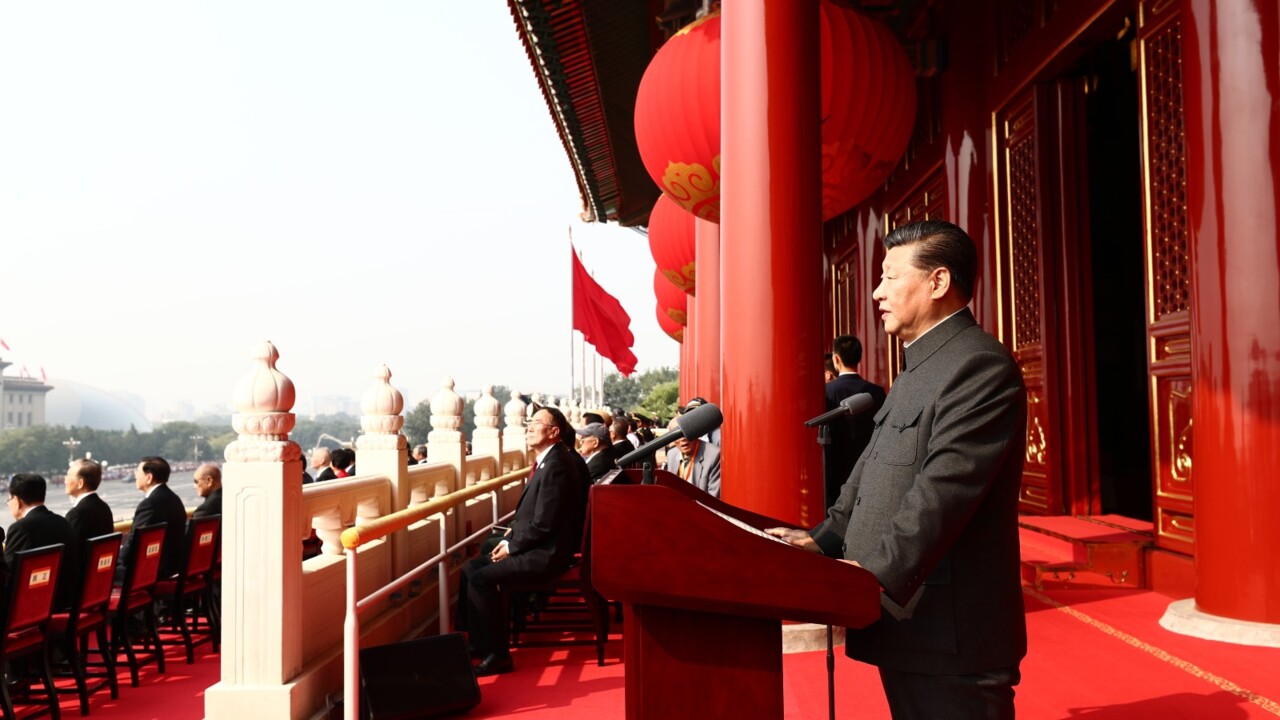Economic data out of the US and China causes market jitters
Pressure on financial markets has ratcheted up thanks to jitters about US interest rates and China’s financial system, as well as underwhelming company reports here.

Pressure on Australian financial markets intensified this week amid jitters about the outlook for US interest rates and China’s economy and financial system, and underwhelming company reports.
Investors wiped $60bn off local shares as the S&P/ASX 200 benchmark dived 2.6 per cent to 7148.1 points, its lowest weekly close since early July.
The 10-year Australian Commonwealth Government bond yield finished up 12 basis points at 4.24 per cent after hitting a three year high of 4.32 per cent. The Australian dollar was down 1.5 per cent to US64c after hitting an 11-month low of US63.65c.
The sell-off in the Aussie dollar and shares came as the 10-year US Treasury bond yield hit a 15-year closing high of 4.28 per cent after recent events, including the Bank of Japan allowing a bigger rise in the Japanese government bond yields, a blowout in US funding needs and credit rating downgrade, stronger than expected US economic data and the Fed’s warning of inflation risks.
China’s reopening continued to falter, with disappointing monthly economic activity data and financial risks growing as officials reportedly asked investment funds to limit sales of Chinese shares. Country Garden warned of ‘‘major uncertainties’’ around bond redemptions and Zhongrong International Trust reportedly hasn’t made payments on some investment products.

On Friday China Evergrande Group sought US court approval to restructure more than $US19bn ($29.7bn) in offshore debts, as the embattled property developer pushes forward on plans to complete one of the world’s largest and most complex debt restructurings.
“The effect has been to change the narrative,” JPMorgan head of Australian equity research Jason Steed said.
“Before we saw those PPI (producer price index) figures and the extent of China’s challenges, the Goldilocks or soft-landing scenario was gaining ground as a likely outcome.
“Now it’s quite different, and as our global strategists have been saying, this inflation cycle is not over – interest rates need to stay higher for longer.
“That’s taken centre stage, and there’s a picture emerging from China – already in a difficult position in terms of its property market and unemployment – that is even more precarious.”
While reporting lower than expected retail sales, industrial production and fixed asset investment, China decided to stop publishing data on youth unemployment after it reached 21 per cent.
The People’s Bank of China subsequently announced a slight easing of monetary policy.
China is currently experiencing deflation despite high inflation in Western economies.
“The Country Garden situation is particularly concerning,” Mr Steed said. Country Garden is China’s largest property developer by some margin.
“When you have 15-year highs in US bond yields, significant concern around the situation in China and a limited policy response, against the fact that the Nasdaq Composite is still up 27 per cent and the S&P 500 is up 14 per cent this year, you’re bound to get some profit-taking at least,” he said.
“Obviously with each step in terms of large-scale fiscal stimulus, the more debt China has and with the three-red-lines policy and the nature of stimulus around construction, there’s a tension between historical-style stimulus and what they might do now, in the context of the de-leveraging process. Certainly the scale of the monetary and fiscal stimulus is currently underwhelming the market.”
After rising as much as 7.6 per cent to a high of 7567 in February, the S&P/ASX 200 is now up just 1.6 per cent for the year to date, with big banks and iron ore miners losing ground.
However, while the elevated valuation of the US sharemarket is challenged by the rising “risk-free” rate offered by US Treasuries, the 12-month forward price-to-earnings multiple of the S&P/ASX 200 is in line with its long-term average after slipping from about 15.2 to 14.8 times this week.

JPMorgan has a 12-month price target of 7500 on the S&P/ASX 200. “If the nature of any global downturn is detrimental to our big banks and miners, we will do it tough, but if it’s more of a valuation-led downturn and iron ore prices don’t fall precipitously, the picture will be reasonable and a dividend yield of around 5 per cent should be supportive,” Mr Steed said. “We are not a particularly stretched valuation in terms of banks and miners, although industrials are trading around 18 times, which is not high, but not looking cheap.”
It comes before what is likely to be a closely watched speech by Fed chair Jerome Powell next Friday at the Jackson Hole Economic Policy Symposium in Wyoming.
With Australia’s corporate earnings period now 40 per cent concluded in terms of the number of reporting companies, or 50 per cent by market capitalisation, Mr Steed said the number of stocks beating earnings estimates was “a bit light” but not as bad as he expected. Just over 22 per cent of companies have beaten JPMorgan estimates, which compares to a normal level of about 30 per cent, while 40 per cent of companies have missed estimates.
In terms of forecasts for the next 12 months, earnings per share estimates for companies that have reported so far have come down about 1.7 per cent, while dividends per share have been revised down about 4 per cent, a figure skewed by some larger companies, according to Mr Steed.
But reporting companies have outperformed the benchmark by 1.5 per cent on an equal-weight basis. He sees potential for a positive “inflection point” for corporate earnings forecasts occurring in the December half-year, after companies “reset their cost base”.







To join the conversation, please log in. Don't have an account? Register
Join the conversation, you are commenting as Logout